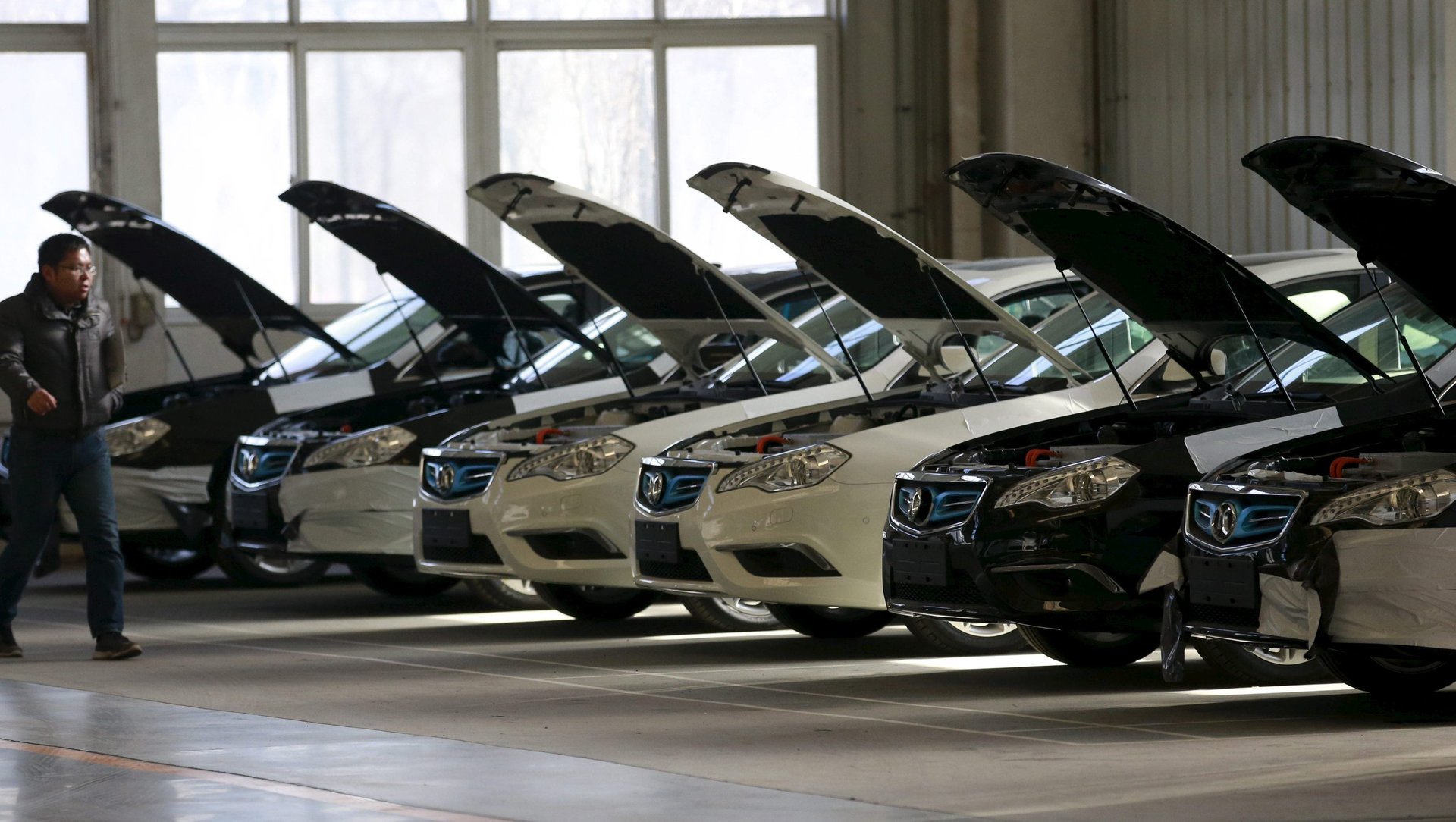China’s hit upon the best way to boost sales of electric cars—but it’ll hurt fossil-fuel ones
Things continue to look dire in the world’s largest auto market, which has seen 10 consecutive months of declining sales. To reverse that trend, China’s turning to one of the most effective tools it has traditionally used to curb car sales: quotas.


Things continue to look dire in the world’s largest auto market, which has seen 10 consecutive months of declining sales. To reverse that trend, China’s turning to one of the most effective tools it has traditionally used to curb car sales: quotas.
For years China’s biggest cities have limited the number of license plates available in a year to control congestion and pollution, along with restrictions on when cars can be used. For conventional cars, the available license plates are handed out each year in a lottery, while for electric and hybrid cars—known as New Electric Vehicles—there’s a first-come, first-serve waiting list. The wait time for a new NEV in Beijing is approximately eight years right now, according to Bloomberg.
Last week (June 6), China said local governments can no longer issue restrictions on purchases of new energy vehicles, nor limit the times when they can be on the road. Cities where such restrictions already exist have to phase them out, according to the new policy, issued jointly (link in Chinese) by the state economic planner, the National Development and Reform Commission, and two ministries. Seven cities presently have such rules, including Beijing, Tianjin, Shanghai, Hangzhou, Guangzhou, Shenzhen, and Guiyang, according to a 2018 study published in the Journal of Cleaner Production.
Sales of NEVs have continued to grow even as overall car sales declined 2.8% to 28 million in 2018—the first annual drop in three decades. That’s largely thanks to handsome government subsidies, and the fact that many cities’ quotas are already skewed in favor of electric vehicle sales. The first-come, first-serve policy also makes it possible to plan a car purchase, compared with the randomness of the lottery system for fossil-fuel cars. In Beijing, for example, an applicant has a 0.05% chance (paywall) of being able to get a gas-powered car.
Cities with car quotas accounted for about half of electric-vehicle purchases in China, according to the 2018 study, which analyzed questionnaires from 332 consumers who visited a government-backed electric car promotion center in Beijing for a test drive. Around 43% ranked license availability as their primary reason, far ahead of environmental reasons or even subsidies.
The subsidies for electric cars, however, are going to be cut in half starting June 26, which could lead some car makers to raise prices, further denting car sales. In fact, NEV sales growth has sharply slowed to single-digits as of May. Reducing wait times to buy an electric car might help counteract that. In fact, the new rules are likely to help NEV sales at the expense of fossil-fuel ones.
Angus Chan, a Shanghai-based automotive analyst with Botcom International said it will be hard for big cities like Beijing and Shanghai to ease car caps, since they are among the most gridlocked in the world, according to travel service company TomTom.
Jia Xinguang, executive director of China Automobile Dealers Association, a government-based industry group, thinks the same. He told Chinese financial publication Yicai (link in Chinese) that rather than canceling the restrictions of all purchase limits, cities like Beijing could allocate more of the total quota available to NEVs. This year the city is giving (link in Chinese) 60,000 license plates to NEVs and 40,000 to traditional fuel cars.
Even if China lets go of all purchase restrictions on electric cars, it won’t be enough to revive the auto market—in January China posted a nearly 140% increase in the sales of NEVs, but still saw overall car sales decline by 15.8%. Electric vehicles only accounted for about 4% of total passenger cars sales in the country last year.
Some cities are boosting their overall quotas, however. The southern city of Guangzhou—one of the most congested in China—and nearby Shenzhen announced earlier this month they would increase their annual quotas by more than 40% through 2020. Guangzhou has an annual cap of 120,000 (link in Chinese) for new cars right now.
If China’s seven largest cities lift caps by 50% it could boost auto sales by a quarter of a million units this year, according to a Jefferies analyst. But if current sales trends continue—the first four months of the year saw a decline of about 10%—China could see three million fewer sales than last year, according to CADA’s Jia (link in Chinese).
Looking for more in-depth coverage? Sign up to become a member and read more in-depth coverage of China’s electric-car boom in our field guide.